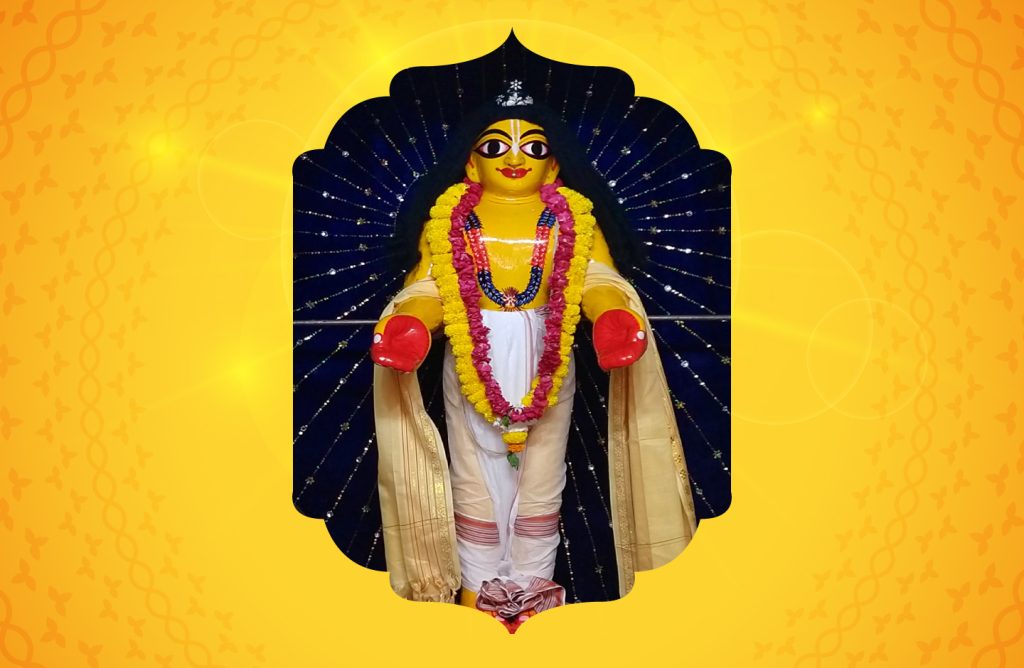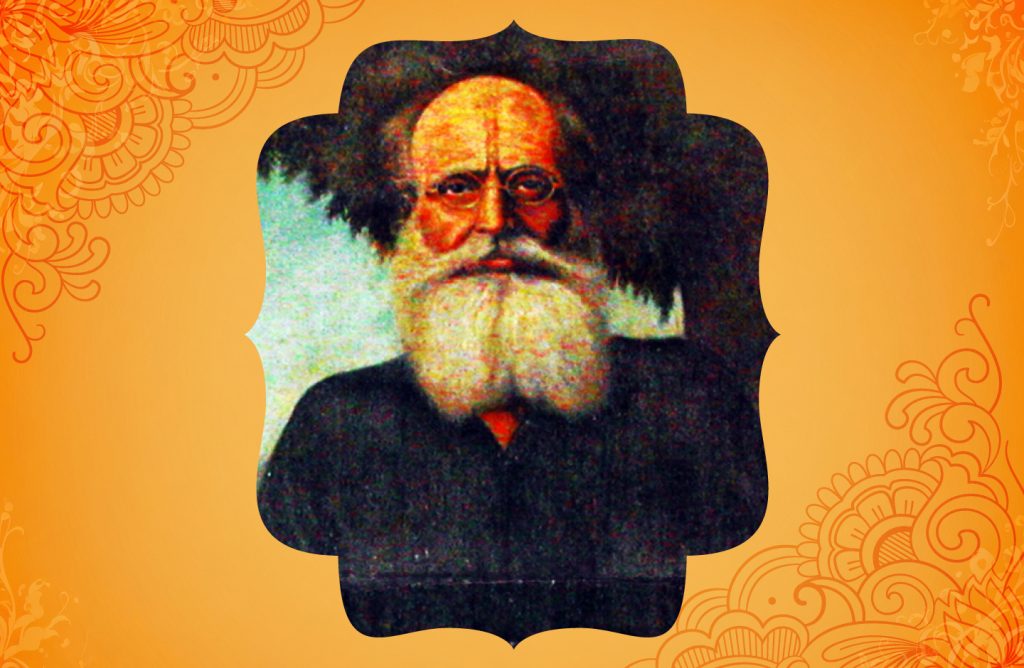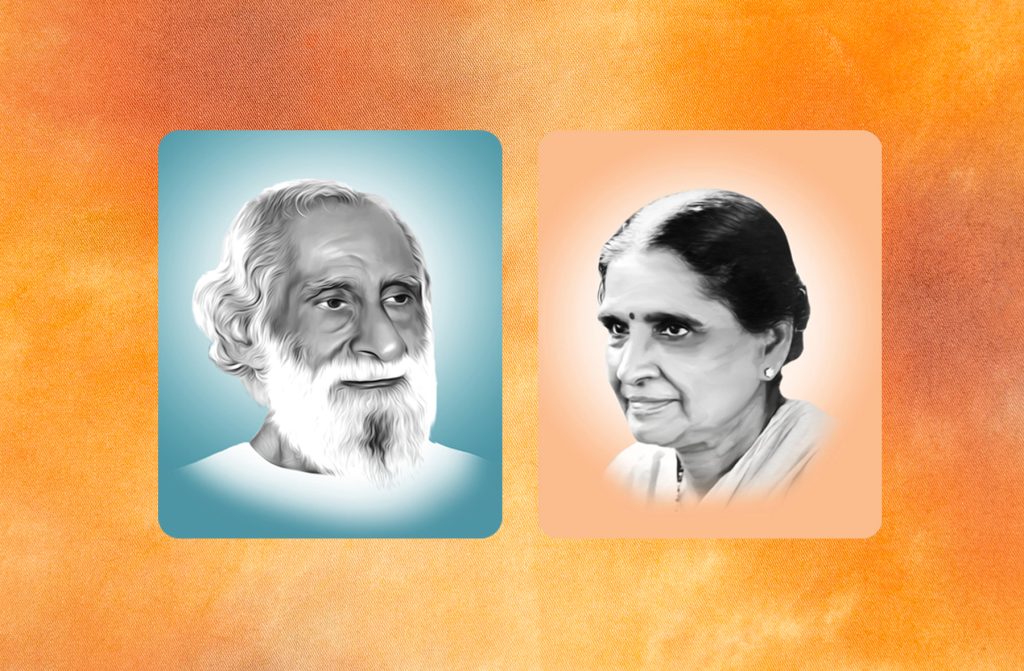Our Master and Lineage

Dr. Radheshyam Mishra – Guru Ji
Dr. Radheshyam Mishra, Ph.D., is a globally renowned Yoga Guru and the visionary Founder of YogaLife Global, YogaLife USA, and Satyadhara YogaLife Ashrams in India and Brazil. Since 1993, he has inspired over half a million people in 56 countries by teaching Traditional Classical Yoga.
Born in the holy city of Ujjain, PunditJi overcame chronic asthma through yoga, transforming his life and dedicating himself to spreading this ancient wisdom. He trained under illustrious Gurus like Dr. Jayadeva and Hansa Yogendra. He has trained 5,000 yoga teachers, authored eight books, and pioneered 500 yoga schools across 22 countries.
Honored with numerous awards, including a Ph.D. in Vedic Yoga, PunditJi’s work integrates Yoga with holistic health and education. His Ashrams and teachings embody a mission to spread love, wisdom, and the timeless principles of Sanatana Dharma globally.
Our Inspiration
Dr. Jayadeva Yogendra, born in 1929, was the son of Shri Yogendraji and a devoted Yogi who embodied simplicity and discipline. The sadhakas at The Yoga Institute regarded him as their true Guru due to his unwavering commitment to a spiritual life. As President of the Institute until his passing in February 2018, he preserved his father’s legacy with quiet dedication. Dr. Jayadeva earned his Masters in Samkhya and Yoga in 1952 and a Ph.D. in 1955. He also served as the Editor of the Institute’s renowned journal, “Yoga & Total Health.” Through pioneering courses and contributions to Yoga Education and Therapeutics, his wisdom, humor, and steadfast devotion to truth continue to inspire students at the Institute.

The Lineage
Chaitanya Mahaprabhu
Chaitanya Mahaprabhu (1486–1534) was a revered Indian saint and founder of Gaudiya Vaishnavism. Born in Nabadwip, Bengal, he is considered an incarnation of Lord Krishna and is known for promoting Bhakti Yoga, emphasizing devotion through the chanting of the Hare Krishna Maha Mantra. His philosophy, Achintya Bheda Abheda, teaches the simultaneous oneness and difference between the soul and God.
Chaitanya’s mission was to spread Krishna Prema (love for Krishna) and encourage a personal relationship with the divine. He inspired the Bhakti movement across India. His disciples, notably the six Goswamis of Vrindavan, formalized his teachings, which later inspired ISKCON. He spent his later years in Puri, Odisha, as a symbol of devotion and love.


Jiva Goswami
Jiva Goswami (1511–1596) was a prominent scholar and theologian of Gaudiya Vaishnavism. A disciple of his uncles, Rupa and Sanatana Goswami, he played a key role in systematizing and expanding Chaitanya Mahaprabhu’s teachings. Born in Ramakeli, Bengal, Jiva mastered Sanskrit and scriptures early on.
His most notable work is the Sat Sandarbhas, a six-part theological text that presents the philosophy of Achintya Bheda Abheda (oneness and difference between the soul and God). He also wrote Hari-namamrita-vyakarana, a grammar using Krishna’s names, and commentaries on the Bhagavata Purana. In Vrindavan, Jiva Goswami organized the Gaudiya tradition, established temples, and promoted devotional practices.
Baladeva Vidyabhushana
Baladeva Vidyabhushana (c. 1700–1793) was a renowned Gaudiya Vaishnava scholar, known for defending the tradition’s theological integrity. Originally trained in the Madhva tradition, he became a follower of Gaudiya Vaishnavism after studying the works of the Goswamis. His most famous work, the Govinda-bhashya, a commentary on the Vedanta Sutra, affirmed Gaudiya Vaishnavism’s alignment with orthodox Vedanta.
In response to rival scholars questioning Gaudiya legitimacy, Baladeva’s Govinda-bhashya defended and elevated its philosophical standing. He also authored Siddhanta-ratna and Vedanta-syamantaka, contributing to the Achintya Bheda Abheda philosophy, solidifying Gaudiya Vaishnavism as a respected school.


Paramahamsa Madhavdas ji
Paramahamsa Madhavdasji (1798–1921) was a revered Indian yogi and true Yoga Master from the Mukhopadhyaya family. His early life inspired a deep devotion to Yoga, and at 23, he left home to study Hatha yoga techniques, focusing on spiritual health and consciousness growth. Throughout his 123-year life, he worked to revive the yogic practices that were fading in India.
Madhavdasji selected only two pupils for Hatha Yoga, notably choosing Shri Yogendra Ji to carry forward Yoga worldwide. A master of various Yoga traditions, his profound contributions to the practice continue to influence the modern world of Yoga.
Shri Yogendra ji & Mother Sita Devi
Manibhai Haribhai Desai (1897–1989), known as Shri Yogendra, was a key figure in the modern revival of Hatha Yoga and founder of The Yoga Institute (1918), the world’s oldest organized yoga center. He pioneered accessible yoga practices, research, and yoga therapy. An author and poet, he wrote under the pen name ‘Mastamani’ and translated Tagore’s Gitanjali into Gujarati. Yogendra is often called the Father of Modern Yoga Renaissance.
Smt. Sita Devi Yogendra (1st June 1912 – 10th April 2008), wife of Shri Yogendraji, was instrumental in the success of The Yoga Institute. A devoted homemaker and yoga practitioner, she became the Institute’s Secretary-Treasurer and led the ladies’ section. Her book Yoga Physical Education for Women is celebrated globally. She treated over 5,000 cases, contributing significantly to yoga therapy.

Our Master and Lineage

Dr. Radheshyam Mishra – Guru Ji
Dr. Radheshyam Mishra, Ph.D., is the Founder and Director of YogaLife Global, YogaLife USA, and Satyadhara YogaLife Ashram in India and Brazil. Since 1993, he has been a pioneer in teaching Traditional Classical Yoga to over half a million people in 50 countries. His journey began at age 14, and after overcoming chronic asthma through yoga, he dedicated his life to teaching. PunditJi has trained 4,000 yoga teachers, authored six books, and founded multiple ashrams, making significant contributions to global yoga.

Our Inspiration
Dr. Jayadeva Yogendra, born in 1929, was the son of Shri Yogendraji and a devoted Yogi who embodied simplicity and discipline. The sadhakas at The Yoga Institute regarded him as their true Guru due to his unwavering commitment to a spiritual life. As President of the Institute until his passing in February 2018, he preserved his father’s legacy with quiet dedication. Dr. Jayadeva earned his Masters in Samkhya and Yoga in 1952 and a Ph.D. in 1955. He also served as the Editor of the Institute’s renowned journal, “Yoga & Total Health.” Through pioneering courses and contributions to Yoga Education and Therapeutics, his wisdom, humor, and steadfast devotion to truth continue to inspire students at the Institute.
The Lineage

Chaitanya Mahaprabhu
Chaitanya Mahaprabhu (1486–1534) was a revered Indian saint and founder of Gaudiya Vaishnavism. Born in Nabadwip, Bengal, he is considered an incarnation of Lord Krishna and is known for promoting Bhakti Yoga, emphasizing devotion through the chanting of the Hare Krishna Maha Mantra. His philosophy, Achintya Bheda Abheda, teaches the simultaneous oneness and difference between the soul and God.
Chaitanya’s mission was to spread Krishna Prema (love for Krishna) and encourage a personal relationship with the divine. He inspired the Bhakti movement across India. His disciples, notably the six Goswamis of Vrindavan, formalized his teachings, which later inspired ISKCON. He spent his later years in Puri, Odisha, as a symbol of devotion and love.

Jiva Goswami
Jiva Goswami (1511–1596) was a prominent scholar and theologian of Gaudiya Vaishnavism. A disciple of his uncles, Rupa and Sanatana Goswami, he played a key role in systematizing and expanding Chaitanya Mahaprabhu’s teachings. Born in Ramakeli, Bengal, Jiva mastered Sanskrit and scriptures early on.
His most notable work is the Sat Sandarbhas, a six-part theological text that presents the philosophy of Achintya Bheda Abheda (oneness and difference between the soul and God). He also wrote Hari-namamrita-vyakarana, a grammar using Krishna’s names, and commentaries on the Bhagavata Purana. In Vrindavan, Jiva Goswami organized the Gaudiya tradition, established temples, and promoted devotional practices.

Baladeva Vidyabhushana
Baladeva Vidyabhushana (c. 1700–1793) was a renowned Gaudiya Vaishnava scholar, known for defending the tradition’s theological integrity. Originally trained in the Madhva tradition, he became a follower of Gaudiya Vaishnavism after studying the works of the Goswamis. His most famous work, the Govinda-bhashya, a commentary on the Vedanta Sutra, affirmed Gaudiya Vaishnavism’s alignment with orthodox Vedanta.
In response to rival scholars questioning Gaudiya legitimacy, Baladeva’s Govinda-bhashya defended and elevated its philosophical standing. He also authored Siddhanta-ratna and Vedanta-syamantaka, contributing to the Achintya Bheda Abheda philosophy, solidifying Gaudiya Vaishnavism as a respected school.

Paramahamsa Madhavdas ji
Paramahamsa Madhavdasji (1798–1921) was a revered Indian yogi and true Yoga Master from the Mukhopadhyaya family. His early life inspired a deep devotion to Yoga, and at 23, he left home to study Hatha yoga techniques, focusing on spiritual health and consciousness growth. Throughout his 123-year life, he worked to revive the yogic practices that were fading in India.
Madhavdasji selected only two pupils for Hatha Yoga, notably choosing Shri Yogendra Ji to carry forward Yoga worldwide. A master of various Yoga traditions, his profound contributions to the practice continue to influence the modern world of Yoga.

Shri Yogendra ji & Mother Sita Devi
Manibhai Haribhai Desai (1897–1989), known as Shri Yogendra, was a key figure in the modern revival of Hatha Yoga and founder of The Yoga Institute (1918), the world’s oldest organized yoga center. He pioneered accessible yoga practices, research, and yoga therapy. An author and poet, he wrote under the pen name ‘Mastamani’ and translated Tagore’s Gitanjali into Gujarati. Yogendra is often called the Father of Modern Yoga Renaissance.
Smt. Sita Devi Yogendra (1st June 1912 – 10th April 2008), wife of Shri Yogendraji, was instrumental in the success of The Yoga Institute. A devoted homemaker and yoga practitioner, she became the Institute’s Secretary-Treasurer and led the ladies’ section. Her book Yoga Physical Education for Women is celebrated globally. She treated over 5,000 cases, contributing significantly to yoga therapy.


